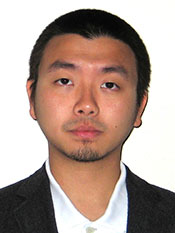Program Information
Performance Characterization of Regularized-Reconstruction Algorithm for 90Y PET/CT Images
W Siman*, S Kappadath , O Mawlawi The University of Texas MD Anderson Cancer Center, Houston, TX The University of Texas Graduate School of Biomedical Sciences, Houston, TX
Presentations
WE-AB-204-1 (Wednesday, July 15, 2015) 7:30 AM - 9:30 AM Room: 204
Purpose:
⁹⁰Y PET/CT imaging and quantification have recently been suggested as an approach of treatment verification. However, due to low positron yield (32ppm), the ⁹⁰Y-PET/CT images are very noisy. Iterative reconstruction techniques that employ regularization, e.g. block sequential regularized expectation maximization (BSREM) algorithm (recently implemented on GE scanners – QClear™), has the potential to increase quantitative accuracy with lower noise penalty compared to OSEM. Our aim is to investigate the performance of RR algorithms in ⁹⁰Y PET/CT studies.
Methods:
A NEMA IEC phantom filled with 3GBq ⁹⁰YCl₂ (to simulate patient treatment) was imaged on GE-D690 for 1800s/bed. The sphere-to-background ratio of 7. The data were reconstructed using OSEM and BSREM with PSF modeling and TOF correction while varying the iterations (IT) from 1–6 with fixed 24subsets. For BSREM, the edge-preservation parameter (γ) was 2 and the penalty-parameters (β) was varied 350–950. In all cases a post-reconstruction filter of 5.2mm (2pixel) transaxial and standard z-axis were used. Sphere average activity concentration (AC) and background standard deviation (SD) were then calculated from VOIs drawn in the spheres and background.
Results:
Increasing IT from 1to6, the %SD in OSEM increased from 30% to 80%, whereas %SD in BSREM images increased by <5% for all βs. BSREM with β=350 didn’t offer any improvement over OSEM (convergence of mean achieved at 2 IT, in this study). Increasing β from 350 to 950 reduced the AC accuracy of small spheres (<20mm) by 10% and noise from 40% to 20%, which resulted in CNR increase from 11 to 17.
Conclusion:
In count-limited studies such as ⁹⁰Y PET/CT, BSREM can be used to suppress image noise and increase CNR at the expense of a relatively small decrease of quantitative accuracy. The BSREM parameters need to be optimized for each study depending on the radionuclides and count densities.
Funding Support, Disclosures, and Conflict of Interest: Research reported in this publication was supported by the National Cancer Institute of the National Institutes of Health under Award Number R01CA13898 and was also partly supported by General Electric.
Contact Email:


